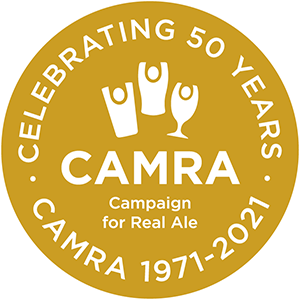New Beehive Inn
West Yorkshire - Bradford
Three star - A pub interior of outstanding national historic importance
This pub is currently closed (since 25/02/2022)
The pub has been closed for over two years now. The new owners submitted a change of use planning application to which CAMRA and others lodged strong objections. The application was withdrawn in November 2022. However, there were signs that work was taking place inside the pub and the Council were asked to investigate whether there have been any breaches of planning control, given the building's listed status. In May 2023, planning and Listed Building Consent applications were submitted regarding a change of use to supported accomodation. Shockingly, and despite the Council's Conservation Officer making his strong objections clear, in March 2024 the Council approved both applications. CAMRA has subsequently told the Council that it considers the decision to have been wrongly made because it failed to take proper account of relevant national planning policies and is therefore challengeable in law. Their response is awaited.
Listed Status: II
171 WestgateBradford
BD1 3AA
Tel: None
Real ale & Cider: Real Ale
Nearby Station: Bradford Forster Square
Station Distance: 600m
Public Transport: Near Railway Station (Bradford Forster Square) and Bus Stop
Bus: Yes
View on: Whatpub
UPDATE May 2024 The pub has been closed for over two years now. The new owners submitted a change of use planning application to which CAMRA and others lodged strong objections. The application was withdrawn in November 2022. However, there were signs that work was taking place inside the pub and the Council were asked to investigate whether there have been any breaches of planning control, given the building's listed status. In May 2023, planning and Listed Building Consent applications were submitted regarding a change of use to supported accommodation.. Shockingly, and despite the Council's Conservation Officer making his strong objections clear, in March 2024 the Council approved both applications. CAMRA has subsequently told the Council that it considers the decision to have been wrongly made as it failed to take relevant national planning policies into account. Their response is awaited.
The New Beehive was rebuilt in 1901 under plans by J. H. Cox, city surveyor, as part of the municipal improvement of Westgate. There was then a major makeover in 1936 under Bingley architect Joseph Foulds for William Whitaker & Co., one of Bradford’s leading brewers, so the New Beehive is an interesting mixture of Edwardian and interwar work. Much of the Edwardian plan survives but the front right-hand bar is the only one to retain its 1901 fittings. Here there is a slight discontinuity in the seating and there may have been a baffle here and, judging by the corresponding infill on the bar counter, another one there for a hint of privacy (it is said some screenwork was removed about 1984). On the left of the entrance foyer are two rooms which were known as smoke rooms in 1936. Before 1936 the area behind the public bar was the kitchen, scullery and a yard but then a further smoke room was created here (now lacking any historic fittings) and the long tiled passage created to provide access to indoor toilets, sited in the former yard. Food consists of snacks.
The New Beehive blends elements of its original late Victorian interior with a 1936 remodelling by William Whitaker & Co, one of Bradford's leading brewers of the inter-war era. It was rebuilt in 1901 as part of the municipal improvement of Westgate (replacing an old coaching inn) and the plans for its construction were drawn up by the city architect & surveyor of the time, J H Cox.
The original three rooms are to a typical 'house' plan, with the central corridor elaborated into a drinking hallway. In the front public bar, the curving oak bar-counter, arcaded back-fitting and bench seating are all fittings from the 1901 scheme. The old fabric and décor elsewhere is from the 1936 refurbishment and seen at its best in the back-left smoke room and the panelled hallway lobby. The gents' toilet, the tiled corridor to it, and the back concert room (now lacking in original fittings) are also of 1936. CAMRA sought statutory listing in 2009, but without success.
 Pub Heritage
Pub Heritage 